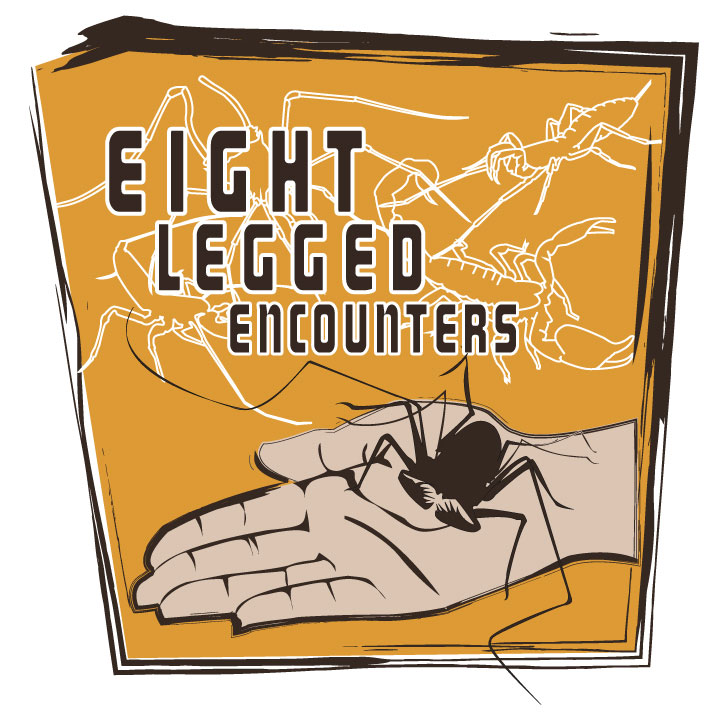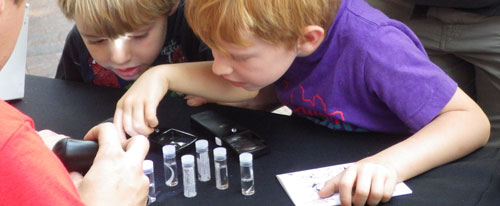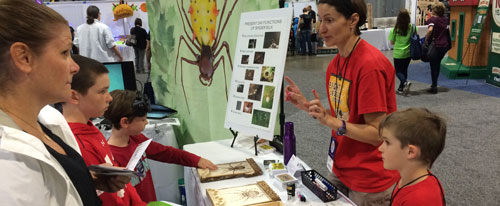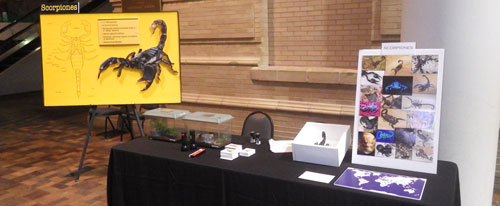Eight – Legged Encounters
Eight-Legged Encounters and all of its associated resources were developed for you – formal and informal science educators, caregivers, interested youth, arachnophobes, etc. It was developed with the goal of educating the public about the wonders of biology and the possibility of scientific discovery using a charismatic and engaging group of animals – Arachnids.

Our Story
Arachnids (spiders and their relatives) are ubiquitous, thriving in most habitable environments on our planet (including under water). They are tremendously diverse in their form, behavior, sensory systems, and general natural histories; making arachnid ecology and evolution fertile ground for teacing a breadth ofScience, Technology, Engineering, andMath (STEM) knowledge content. The diversity of arachnid biology allows us to fluidly integrate concepts and knowledge from fields as disparate as anatomy, physiology, development, animal behavior, predator ecology, biomechanics, biomimetics, and bioinspired technologies (among others) into hands-on educational activities for audiences of all ages.
As a Scientist, a Mother, and an Educator, I often see the disconnect between youth and the world around them; between problem solving skills, observation skills, critical thinking, natural curiosity and the more traditional formal teaching programs experienced by many students. Youth are innately curious and tremendously creative and my aim is to leverage these traits for their own educational advancements in a fun and engaging manner.
Original Artwork is used throughout Eight-Legged Encounters as a way to draw participants. All artwork and design, including the brainstorming of many hands-on activities, is the result of a fantastic collaboration with an amazing local artist – Pawl Tisdale (http://www.pawltisdale.com/)
To date, we have developed more than 25 modular activity stations encompassing arts and crafts, experiments, games, and other hands-on activities. The activities can be broken up into the following categories:
Classification and Taxonomy

These activities introduce the arachnids and their relatives. Participants discover the characteristics of the arthropods, create their own chelicerates, and explore the diversity within the arachnids.
Spiders and Silk

The spiders are an amazingly diverse group. Some of these stations investigate spider’s various foraging strategies, including the many ways that spiders use silk. Others give participants a chance to hear spider sounds and watch spider dances. A read-aloud station is designed for younger participants.
Path of Predators

The Path of Predators uses live animals to walk you through the 11 extant (living) arachnid orders. It includes an activity booklet that can be downloaded for print in addition to extra activities and games associated with each of the orders.
Hands on Science

These stations allow participants think like scientists with microscopes and real experiments testing how vibrations affect spider foraging success.
Evaluation Reports
Eight-Legged Educators:
Exploiting the Enigmatic Nature of Arachnids
Evaluation Progress Report
Prepared:
October 2014
Exploiting the Enigmatic Nature of Arachnids
October 2014
Eight-Legged Educators:
Exploiting the Enigmatic Nature of Arachnids
Evaluation Progress Report
Prepared:
Year 1 Fall 2012 to Spring 2013
Exploiting the Enigmatic Nature of Arachnids
Year 1 Fall 2012 to Spring 2013
